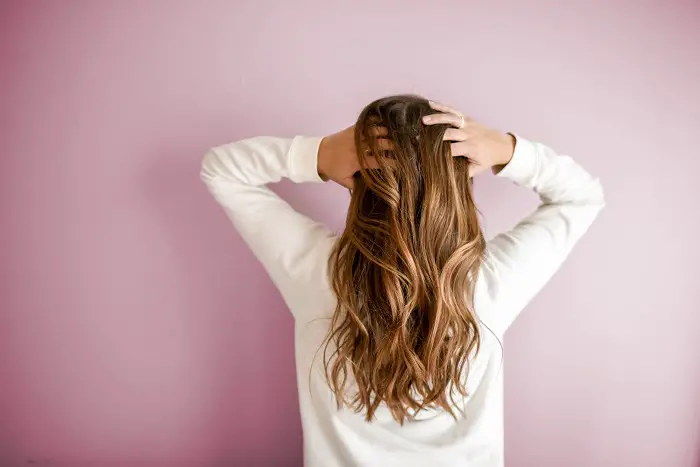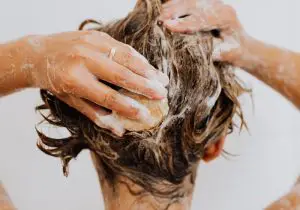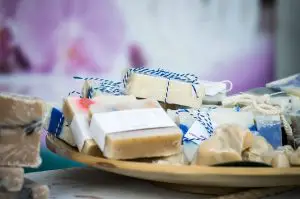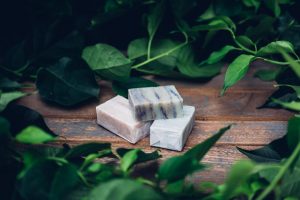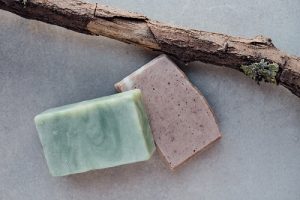When you switch to solid shampoo, it's common to end up with a more sensitive and irritated scalp. This sensation is extremely uncomfortable, and very often we have only one desire: to find our liquid shampoo as soon as possible! Yet sometimes a dry scalp is just the result of a change in your hair routine. So nothing serious and definitive! These sensations can very well disappear if we adopt the right actions and the right products. We will see together why solid shampoo makes the scalp sensitive. Then we will see together, the solutions to avoid irritation from solid shampoo.
In this section:
Why does solid shampoo irritate my scalp?
The scalp determines the health of your hair. A scalp irritated, dry, and sensitive are the signs that reveal his poor state of health. Generally, the entire hair pays the price. So how can I explain that solid shampoo causes irritation to my scalp?
- Regulation of the scalp disrupted by sulfates causes irritation
Regulation of the scalp is sensitive. Sebum (the natural hair oil) is its natural defense against external aggressions (UV, salt, dust, pollution, etc.). However, since childhood, the scalp has been attacked by our conventional liquid shampoos. Indeed, chemical agents such as sulphates which allow the base to wash the scalp, are partly responsible for its disorder. These are very aggressive surfactants which act as a stripper. You should know that the hair and scalp must have a pH of 4,5 to 5,5. The majority of our large surface shampoos do not respect this pH. This is more than 60% of liquid shampoos that have a pH greater than 5,5. A change in the regulation of the scalp can lead to its increased sensitivity.
- A capillary transition that disrupts the regulation of the scalp and makes it sensitive
When you go over a solid shampoo, the scalp often finds itself again with a modified pH. This is because solid shampoos have milder surfactants than liquid shampoos. The majority are found with a pH between 4 and 7. Ideal for the scalp!
So how to explain that it is when going to the solid shampoo that the scalp is irritated?
Even if the surfactants are softer and are much less aggressive, the sudden change in composition by switching to solid shampoo can cause irritation and thus make the scalp sensitive and dry. This doesn't mean that shampoo is bad for you. Above all, he will have to get used to the new shampoo and pass the hair transition period. It is still important to determine where is your irritation problem coming from using solid shampoo. This could be from poorly executed actions during your wash, or from shampoo that is not suitable for you for various reasons.
Solutions for scalp irritation problems using solid shampoo

In this second part, we are going to help you regulate your scalp again by adopting certain gestures and certain habits when you make your solid shampoo. If the irritation continues despite everything, we will explain how to change your solid shampoo, while respecting certain criteria related to the composition of the latter.
Use your solid shampoo well to avoid irritating your scalp
The irritation caused by shampoo products is accompanied by a sensitive scalp. To remedy this, here are some tips to help you get through the hair transition period and soothe your scalp.
- Alternate between a solid shampoo and a liquid shampoo. When you switch to solid shampoo, you can alternate the first few weeks using your old shampoo every other time, then your new one. In this way, the hair will have time to get used to the new components. Gradually reduce the use of liquid shampoo, until you only use your solid shampoo. The capillary transition will be easier to pass, and your scalp will be less sensitive, and less dry when you use your solid shampoo.
- If your solid shampoo irritates your scalp, apply less of the product to your scalp when washing. Be careful because the solid shampoo foams very little. This is due to the natural and mild surfactants that compose it. A common mistake is to apply more product than is necessary for the shampoo to foam. You risk that excessive residues of solid shampoo will stick to your scalp and so irritate him and from To raise awareness.
- Think of rinse your solid shampoo well to avoid irritation. So it always comes back to the same point: don't apply too much shampoo. You will have a harder time getting it to rinse off. If you think there isn't enough shampoo to wash all of your hair, try not to add more. Wet your hand or hair again very lightly so that the solid shampoo foams a little more. Then distribute it again over the entire head.
- Rinse your hair with vinegar water as the last rinse if your solid shampoo irritates your scalp! This gesture allows you to get rid of irritating and drying lime residue. As a result, it will decrease the chances that your solid shampoo will make your scalp dry.
- Un scalp that is sensitive with strong shampoo can also be a sign that it is dried out. If you don't have hair that grows quickly, you can hydrate and nourish it with vegetal oils (Jojoba, Argan, Coco etc). Do your treatment once a week and about XNUMX minutes before shampooing. Be careful not to apply too much of it, otherwise the roots will suffocate and cause irritation.
- Use a mineral clay to cleanse the scalp (green clay, white clay or rhassoul). These clays have soothing and cleansing properties: they absorb impurities and toxins. They unclog the scalp. In this way, your scalp will be less dry and therefore less sensitive when using your solid shampoo.
Choose the right solid shampoo for a scalp problem sensitive
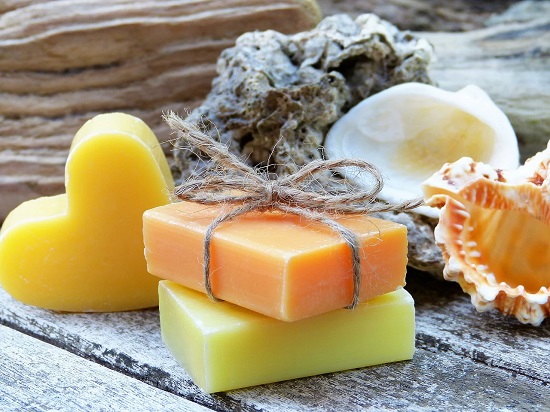
If despite these actions the condition of your scalp has not improved, it may be time to change your bar shampoo. Yes at the end of the capillary transition period (from 2 weeks to two months), your solid shampoo always gives you irritation, it is probably not suitable for you. Here are some tips to help you find the solid shampoo that's best for your sensitive scalp problem:
- Choose a solid shampoo that matches your hair type to avoid having a dry scalp. Solid shampoos have different compositions and each of them corresponds to a type of hair (oily, dry, colored, thick, fine hair, etc.). Your hair requires special and personalized care. It is therefore very important that you respect your hair nature to have a healthy scalp and hair.
![]() Discover our selection of best solid shampoos according to your hair type in this article.
Discover our selection of best solid shampoos according to your hair type in this article.
- Choose a strong shampoo with mild surfactants that won't irritate your scalp. Indeed, some surfactants are irritating, while on the contrary others are qualified as very mild.
![]() To help you when choosing your solid shampoo, here are the mild and very mild surfactants to favor: Decyl Glucoside, Coco Glucoside, Disodium Cocoyl Glutamate or Lauryl Glucoside, Sodium Coco Sulfate, Sodium Cocoyl Isethioniate, Cocamidopropyl Betaine, Disodium Cocoamphodiacetate Sulfodium, or Sulfodium .
To help you when choosing your solid shampoo, here are the mild and very mild surfactants to favor: Decyl Glucoside, Coco Glucoside, Disodium Cocoyl Glutamate or Lauryl Glucoside, Sodium Coco Sulfate, Sodium Cocoyl Isethioniate, Cocamidopropyl Betaine, Disodium Cocoamphodiacetate Sulfodium, or Sulfodium .
![]() On the contrary, certain surfactants should be avoided because they attack your scalp. They can give you irritation. These are Sodium Lauryl Sulfate, Sodium Laureth Sulfate, and Ammonium Lauryl Sulfate.
On the contrary, certain surfactants should be avoided because they attack your scalp. They can give you irritation. These are Sodium Lauryl Sulfate, Sodium Laureth Sulfate, and Ammonium Lauryl Sulfate.
- To prevent your solid shampoo from giving you a sensitive and irritated scalp, choose a shampoo with a scalp-friendly pH. That is to say between 4 and 7. Very often, the pH is indicated on the product sheet. If this is not the case, it can be specified by the words “normal hair” or “mild shampoo”.
- Choose solid shampoo with essential oils (HE) to sanitize and avoid scalp irritation problems. Essential oils of tea tree, Roman chamomile or lavender are ideal. They calm the irritations caused by the new composition of your solid shampoo. Be careful that there is not too high a quantity of essential oils which could on the contrary damage your scalp. In addition, some people do not tolerate ETs and they may therefore be responsible for a sensitive and dry scalp. If the solid shampoo you are using contains essential oils and is causing you irritation, try one that does not.

